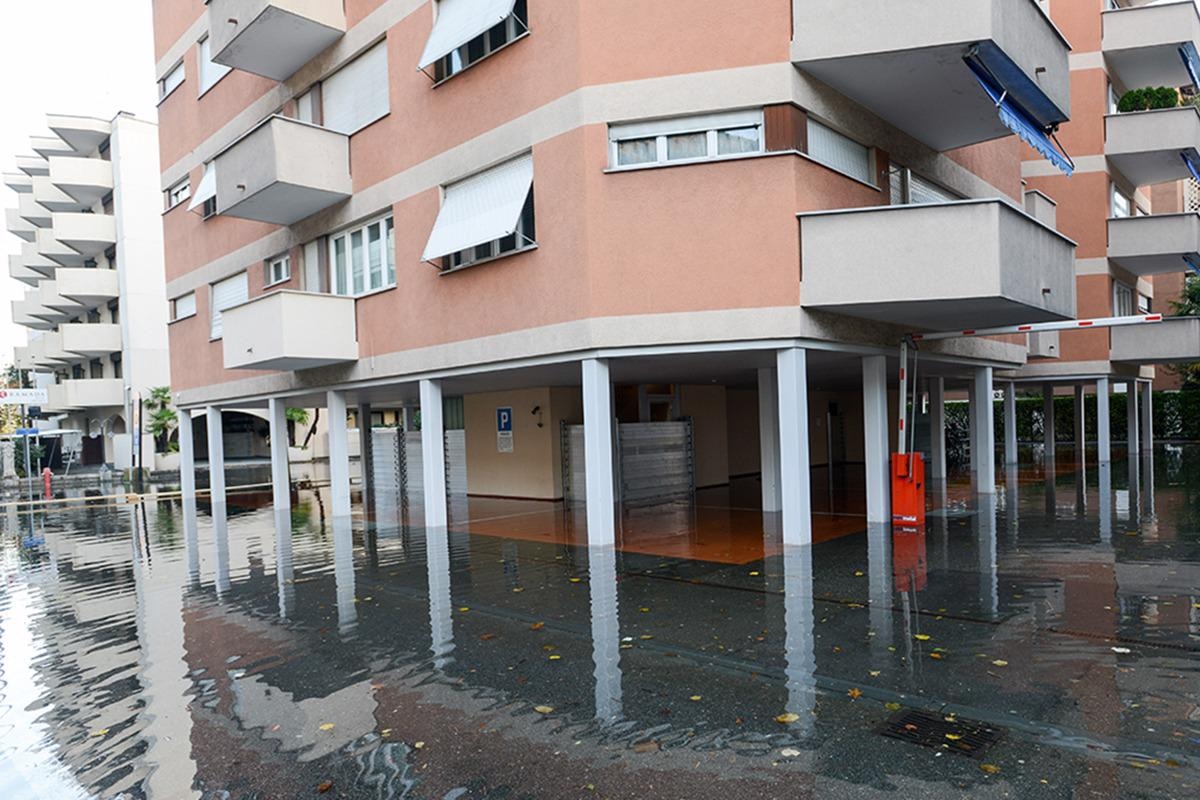Mar 8 2021
In recent decades, there has been an increase in nuisance flooding on U.S. coasts caused by sea level rise. A new study co-authored by the University of Central Florida has now revealed an additional reason for its increased frequency.
 Flooded roads and overloaded stormwater systems can be major inconveniences for people and provide habitat for bacteria and mosquitoes. Image Credit: Adobe Stock.
Flooded roads and overloaded stormwater systems can be major inconveniences for people and provide habitat for bacteria and mosquitoes. Image Credit: Adobe Stock.
The study, published recently in the Science Advances journal, shows that higher local tide ranges, most probably due to human-induced modifications to estuaries and coastal areas, have led to an increase in the number of nuisance flooding days in several coastal locations in the United States.
Nuisance flooding along the coasts is regarded as minor flooding from the seas resulting in problems like overloaded stormwater systems and flooded roads, which could prove to be significant inconveniences for people while offering habitat for mosquitoes and bacteria.
Variations in local tide range usually occur in coastal areas and estuaries during dredging of channels, development, reclamation of land, change in river flows. This can lead to an increase in tide ranges, denoted as the difference in height between low tide and high tide, in certain areas and drop in others.
Among the 40 U.S. National Oceanic and Atmospheric Administration tidal gauge locations analyzed in the study dotting the continental U.S. coastlines, almost half were found to have more nuisance flooding days due to higher local tide ranges.
It’s the first time that the effects of tidal changes on nuisance flooding were quantified, and the approach is very robust as it is based purely on observational data and covers the entire coastline of the U.S. mainland.
Thomas Wahl, Study Co-Author and Assistant Professor, Department of Civil, Environmental and Construction Engineering, University of Central Florida
The researchers used tidal gauge data from 40 locations along the Atlantic, Gulf, and Pacific coasts, covering at least 70 years of data, to conduct the study.
Water levels at the locations were compared based on two distinct scenarios—one where there was no change in tidal range and one in which there was change.
Thus, the researchers could observe how often nuisance floods happened or were avoided over time due to tidal changes.
Nuisance flooding was found to have increased due to tidal changes in around half the locations, decreased a quarter of the locations, and not changed in the remaining quarter of the locations.
For instance, in 2019, Cedar Key, Florida, experienced nearly 23 additional nuisance flooding days due to an increase in tidal range, while Washington, D.C., received about 42 days fewer because of a decrease in tidal range.
Seeing how many nuisance flooding events occurred in the past and are happening today simply because of tidal changes should be motivation for us to keep alterations to sensitive estuarine systems at a minimum as to not further exacerbate the problem, which we already face because of sea level rise.
Thomas Wahl, Study Co-Author and Assistant Professor, Department of Civil, Environmental and Construction Engineering, University of Central Florida
“We should at least be aware of these potentially negative impacts in the planning phase of alteration projects, and it might even be possible to reverse some of the negative impacts from past decisions,” added Wahl
The lead author of the study is Sida Li, who is also a visiting student in UCF’s Department of Civil, Environmental and Construction Engineering and the National Center for Integrated Coastal Research.
According to Li, although some individual instances of minor flooding events do not lead to too many effects, the collective effects of frequent events can turn very large.
Hence, understanding what drives the changes in nuisance flooding is very important.
Sida Li, Study Lead Author and Visiting Student, Department of Civil, Environmental and Construction Engineering, University of Central Florida
The National Science Foundation financially supported this study.
Journal Reference:
Li, S., et al. (2021) Evolving tides aggravate nuisance flooding along the U.S. coastline. Science Advances. doi.org/10.1126/sciadv.abe2412.